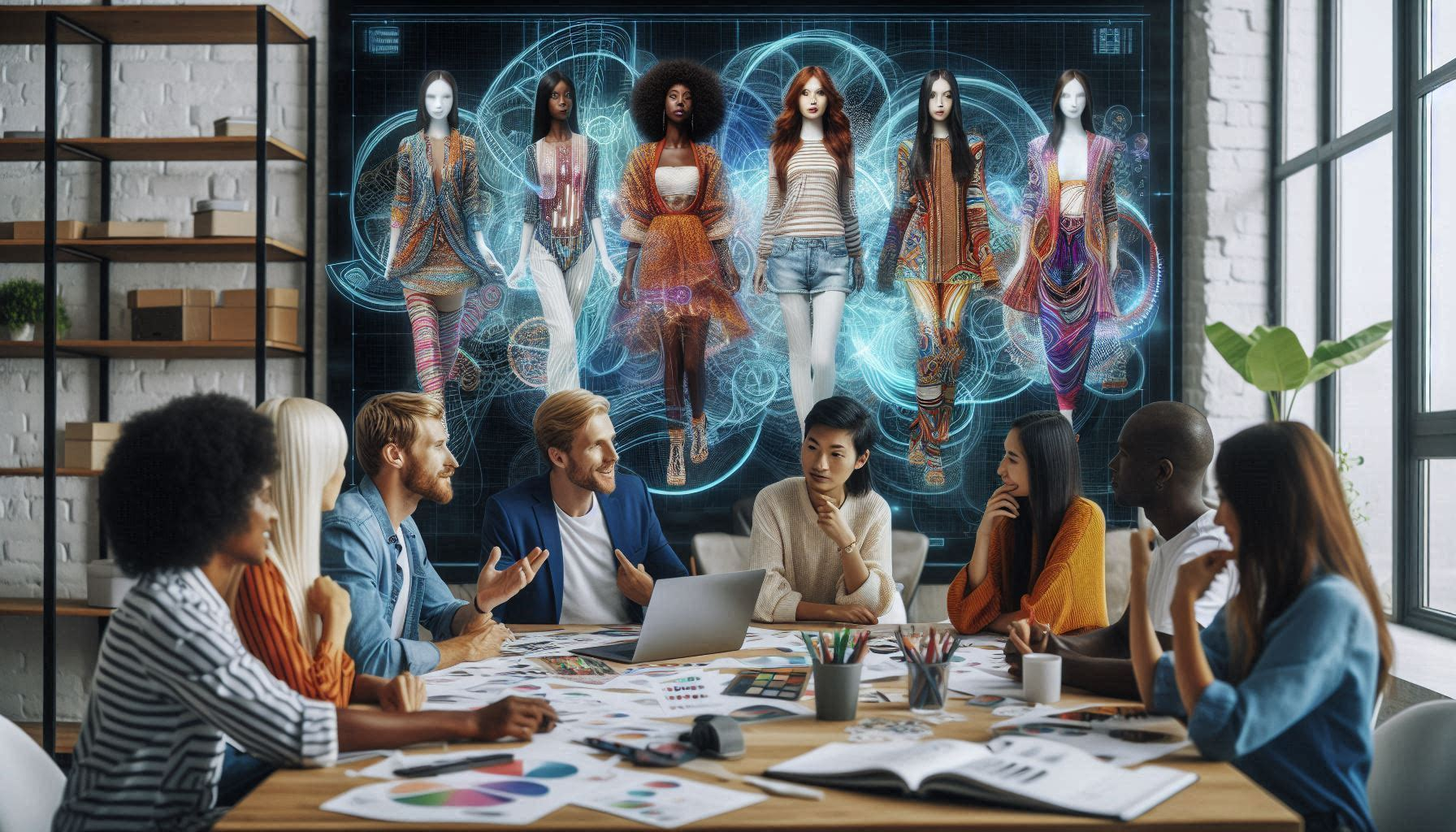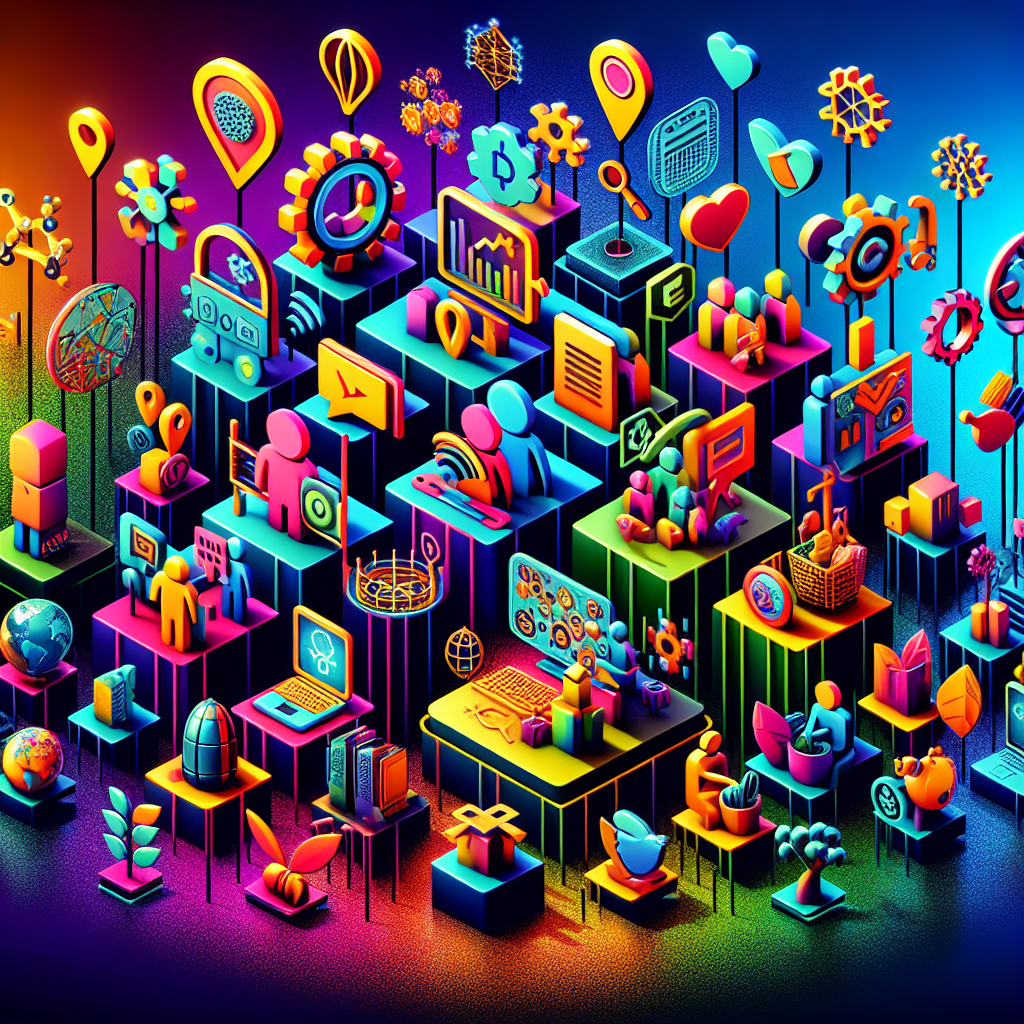
In recent years, artificial intelligence (AI) has made significant strides in transforming various industries, and the world of fashion is no exception. Generative AI, a subset of AI that involves the creation of new content using algorithms, is revolutionizing the fashion industry by designing tomorrow's trends. This article explores how generative AI is reshaping fashion design, the technology behind it, its impact on the industry, and what the future holds for AI in fashion.
Index
- Introduction to Generative AI in Fashion
- How Generative AI Works in Fashion Design
- Impact of Generative AI on the Fashion Industry
- Case Studies of Generative AI in Fashion
- The Role of Human Designers in the Age of AI
- Challenges and Ethical Considerations
- Future Trends and Predictions
- Conclusion
Introduction to Generative AI in Fashion
Fashion has always been a dynamic field, constantly evolving with new trends, materials, and techniques. The introduction of generative AI into fashion is a game-changer, offering unprecedented opportunities for creativity and efficiency. By leveraging AI algorithms, designers can now create unique patterns, styles, and even entire collections that were previously unimaginable.
The Rise of AI in Fashion
The use of AI in fashion is not entirely new. For years, brands have been using AI for tasks such as inventory management, trend forecasting, and personalized recommendations. However, the advent of generative AI takes this a step further by enabling the creation of entirely new designs. This technology analyzes vast amounts of data from existing fashion trends and generates new designs that align with current aesthetics while introducing innovative elements.
How Generative AI Works in Fashion Design
Generative AI in fashion design relies on sophisticated algorithms that can analyze patterns, colors, and styles from large datasets. These algorithms, often powered by neural networks, can generate new designs based on the input data.
The Technology Behind Generative AI
At the core of generative AI in fashion are Generative Adversarial Networks (GANs). GANs consist of two neural networks: the generator and the discriminator. The generator creates new designs, while the discriminator evaluates them. Through this process, the AI learns to produce increasingly realistic and creative designs.
Data Collection and Analysis
The first step in the generative AI process is data collection. This involves gathering a large dataset of fashion images, including clothing, accessories, and runway shows. The AI then analyzes these images to understand patterns, colors, and styles. By identifying these elements, the AI can generate new designs that reflect current trends while introducing novel ideas.
Design Generation
Once the AI has learned from the dataset, it begins generating new designs. These designs can range from simple patterns to complete outfits. The AI can also experiment with different styles, colors, and materials, offering a wide range of possibilities for fashion designers.
The Role of Human Designers
While generative AI is a powerful tool, human designers still play a crucial role in the process. Designers provide the creative vision and guidance, selecting the best AI-generated designs and refining them. This collaboration between human creativity and AI technology results in unique and innovative fashion collections.
Impact of Generative AI on the Fashion Industry
The integration of generative AI into fashion design is having a profound impact on the industry. From accelerating the design process to creating personalized fashion, AI is transforming how designers work and how consumers experience fashion.
Accelerating the Design Process
One of the most significant benefits of generative AI is its ability to speed up the design process. Traditional fashion design can be time-consuming, involving numerous sketches, prototypes, and revisions. With AI, designers can generate multiple design options in a fraction of the time, allowing for faster iteration and innovation.
Personalized Fashion
Generative AI also enables personalized fashion, where designs can be tailored to individual preferences. By analyzing data from consumers, such as their style preferences and body measurements, AI can create custom designs that fit perfectly and match the customer's unique taste. This level of personalization enhances the consumer experience and sets new standards for the fashion industry.
Sustainability and Efficiency
Sustainability is a growing concern in the fashion industry, and generative AI offers potential solutions. By optimizing the design and production processes, AI can reduce waste and improve efficiency. For example, AI can predict which designs will be popular, reducing the need for overproduction and minimizing excess inventory.
Case Studies of Generative AI in Fashion
Several fashion brands and designers are already leveraging generative AI to create innovative collections. These case studies highlight the diverse applications of AI in fashion and demonstrate its potential to transform the industry.
Tommy Hilfiger and IBM Watson
Tommy Hilfiger collaborated with IBM Watson to explore how AI could enhance the design process. By analyzing data from runway shows, social media, and consumer feedback, IBM Watson generated insights that helped designers create new collections. This collaboration resulted in innovative designs that resonated with consumers and reflected current trends.
The Fabricant
The Fabricant, a digital fashion house, uses generative AI to create virtual clothing. These digital garments can be worn in virtual environments, such as social media and video games. By combining AI-generated designs with digital fashion, The Fabricant is pushing the boundaries of traditional fashion and exploring new frontiers in the digital world.
Balenciaga and AI-Generated Music
Balenciaga took an innovative approach by integrating AI-generated music into their runway shows. Using AI to compose original music, Balenciaga created a unique and immersive experience for their audience. This blend of fashion and AI-generated art highlights the creative potential of AI in enhancing the overall fashion experience.
The Role of Human Designers in the Age of AI
Despite the advancements in AI technology, human designers remain at the heart of the fashion industry. Generative AI is a tool that enhances their creative capabilities, but it does not replace the need for human vision and artistry.
Collaboration Between AI and Designers
The collaboration between AI and human designers is a symbiotic relationship. AI provides new possibilities and speeds up the design process, while human designers bring their unique creativity and intuition. This partnership allows for the creation of innovative and original designs that reflect both technological advancement and artistic expression.
Preserving Human Touch
While AI can generate impressive designs, the human touch remains essential in fashion. Designers infuse their work with emotions, cultural references, and personal experiences, creating pieces that resonate on a deeper level. AI can assist in the creation process, but it is the human element that ultimately brings fashion to life.
Challenges and Ethical Considerations
The integration of generative AI into fashion design also presents several challenges and ethical considerations. Addressing these issues is crucial to ensuring the responsible and sustainable use of AI in the industry.
Intellectual Property and Authorship
One of the primary challenges is determining the authorship and ownership of AI-generated designs. If an AI creates a design, who owns the rights to it? This question raises important legal and ethical considerations that need to be addressed as AI becomes more prevalent in fashion.
Bias and Diversity
AI algorithms are only as good as the data they are trained on. If the training data lacks diversity, the AI-generated designs may reflect and perpetuate existing biases. Ensuring that AI systems are trained on diverse and inclusive datasets is essential to promoting diversity and representation in fashion.
Environmental Impact
While AI has the potential to improve sustainability in fashion, it also has an environmental impact. Training AI models requires significant computational power, which consumes energy and contributes to carbon emissions. Balancing the benefits of AI with its environmental impact is crucial for the fashion industry.
Future Trends and Predictions
As generative AI continues to evolve, its impact on the fashion industry is expected to grow. Here are some future trends and predictions for AI in fashion:
Enhanced Personalization
The future of fashion will likely see even greater personalization, with AI creating custom designs tailored to individual preferences and body measurements. This level of personalization will redefine the consumer experience and set new standards for the industry.
Virtual Fashion
With the rise of digital environments and virtual reality, virtual fashion is poised to become more prevalent. AI-generated designs will play a significant role in creating digital garments that can be worn in virtual worlds, opening up new opportunities for fashion brands and designers.
AI-Driven Sustainability
AI will continue to drive sustainability efforts in fashion. By optimizing supply chains, predicting trends, and reducing waste, AI can help the industry become more eco-friendly and efficient. Brands that leverage AI for sustainability will likely gain a competitive edge in the market.
Summary and Conclusion
Generative AI is revolutionizing the fashion industry by offering new possibilities for creativity, personalization, and efficiency. By analyzing vast amounts of data and generating innovative designs, AI is transforming how designers work and how consumers experience fashion. While AI presents several challenges and ethical considerations, its potential to enhance and expand the fashion industry is undeniable.
The future of fashion lies in the collaboration between human designers and AI technology. This partnership allows for the creation of unique and original designs that reflect both technological advancement and artistic expression. As the fashion industry continues to adapt to the presence of AI, it is essential to navigate the challenges and opportunities it presents with careful consideration and open-mindedness.
In conclusion, generative AI is not just a tool for creating new designs; it is a catalyst for innovation and transformation in the fashion industry. By embracing this technology and leveraging its capabilities, designers can push the boundaries of their craft and create the fashion of tomorrow.

